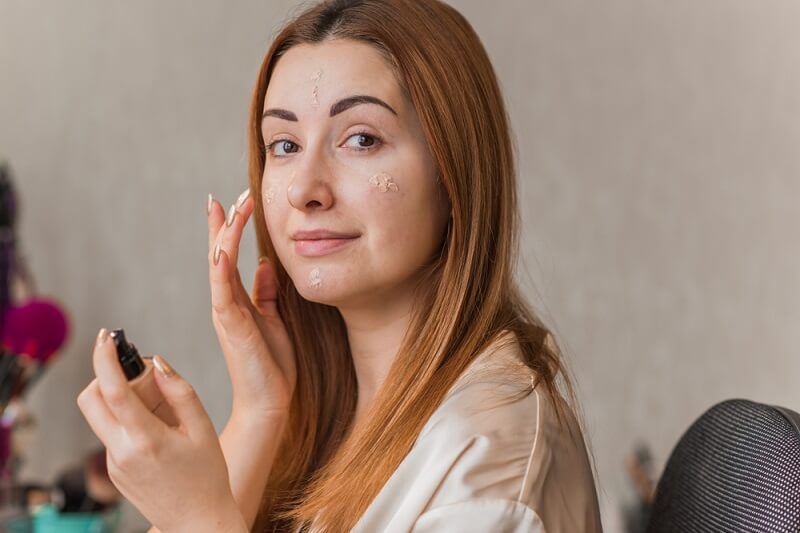
Discovering your perfect concealer will take your makeup to the next level. This concealer shade guide will teach you how to select the proper concealer shade, how to achieve a perfect undertone match, and how to choose the appropriate brightening concealer or full-coverage concealer for your needs. Whatever you're covering up with concealer, dark circles, blemishes, or redness, knowing how to match concealer to skin tone and undertone will make for a seamless finish.
Before learning about the concealer shade guide, let us first establish the foundations. Concealers have different undertones, textures, and coverage. Getting the wrong shade or undertone will make your makeup look dull, ashy, and even patchy.
A quality concealer doesn't only cover up blemishes—it emphasizes the beauty of your skin. This is why undertone matching is crucial when selecting what to buy. Once you determine your undertone and desired coverage, picking the right formula is easy.
The initial step in every concealer shade guide is knowing your skin tone. Skin tone usually falls into three broad categories: fair, medium, and deep. Within each, your undertone decides the best shade family.
Here's a lightning-fast breakdown:
To brighten up the face, use a brightening concealer one shade lighter than your foundation. To cover up blemishes, use a foundation color that is exactly the same as your foundation for smooth blending.

Undertone matching is a critical part of this concealer color guide. Undertones are the soft colors just below your skin's surface and affect how colors look on you.
There are three fundamental undertones:
How to determine your undertone:
After determining your undertone, select a concealer that complements it. For example, if you have warm undertones, a peachy or golden brightening concealer will look excellent.
Even if you have the best color concealer guide available, nothing will work out if you don't apply it correctly. Here are some pro concealer tips to help you achieve a smooth, natural look:
These concealer tips can really be helpful, especially when combined with the right undertone matching and brightening concealer.
The type of concealer to choose, whether brightening or full coverage, depends on your makeup needs.
In your guide to concealer shades, understanding when and where to apply each formula is essential. You can even stack them up—begin with full coverage on spots, follow with brightening concealer under the eyes for a glowing look.
Many people do not realize how undertone matching impacts the brightness and natural appearance of concealer. When you choose a shade that is too cool for your warm undertone, your under-eye area will appear gray. Also, when a warm concealer is applied to cool undertones, it can look orange.
The key is to remain near your undertone family. To illuminate, apply a concealer of the same tone but one shade lighter. This adds lightness without breaking the unity with your foundation tone.
Example:
A working concealer shade guide always emphasizes the importance of lighting. The setting where you test or apply concealer influences how it appears on your skin.
Even with a comprehensive concealer shade guide, accidents happen. Try not to make these common mistakes:
Your guide to concealer shades should also take into account your skin type, because texture plays a role in how the product sits.
These concealer tips ensure smooth, crease-free results tailored to your unique skin needs.
Many pros suggest using more than one concealer in your beauty case. Here's why:
This range allows you to personalize your look—whether natural or glam—without disrupting the tone-to-brightness ratio.
Your skin tone is not fixed. Sun and weather changes can change your shade over the course of a year.
In summer, your skin may tan, and you'll need a more intense concealer. In winter, you may need a lighter, brighter one. Having two or three shades on hand allows you to ensure consistency, regardless of the time of year.
A full concealer shade guide takes into account seasonal variations, ensuring your makeup is always balanced and true to tone.
Regardless of how flawless your undertone matching is, blending seals the deal and makes your makeup look seamless.
Here's how to do it:
Set using a powder to prevent creasing! Blending helps lift your features naturally with your brightening concealer and conceals any blemishes flawlessly with a full-coverage concealer.
Here’s what professional makeup artists suggest when following any concealer shade guide:
These professional concealer tricks will help you elevate your everyday looks with ease and confidence.
Concealer is not just a makeup essential—it is your secret to beautiful, radiant skin, with or without makeup. This shade guide for concealer helps you find your perfect shade, match your undertones, and determine whether a brightening or full-coverage concealer is right for you.
Once you know your undertones, pick the correct formula, and keep in mind the tips that professional makeup artists live by, you will achieve a flawless, natural finish every time. Remember: the best concealer is one that accentuates your individual beauty rather than concealing it.
This content was created by AI